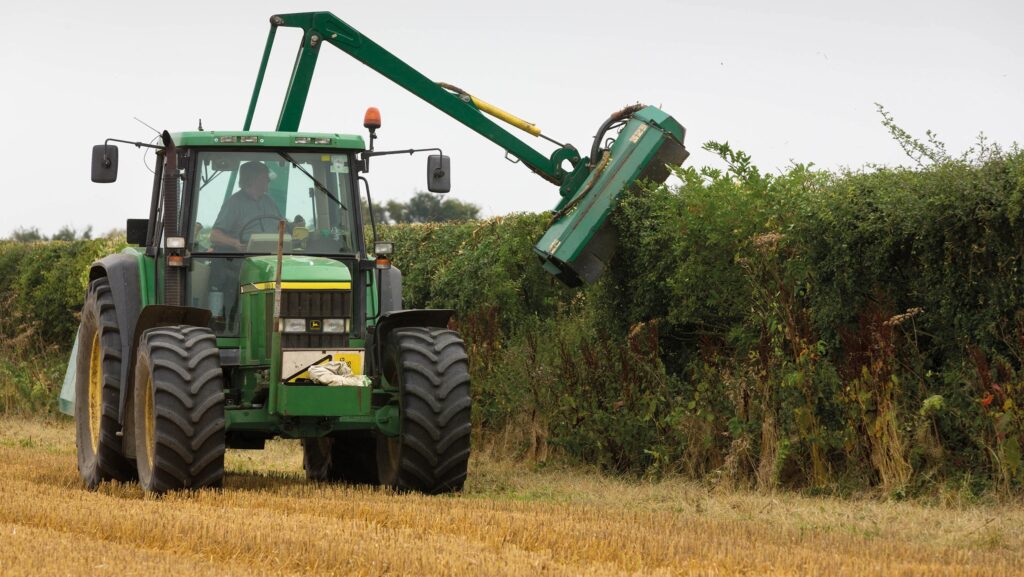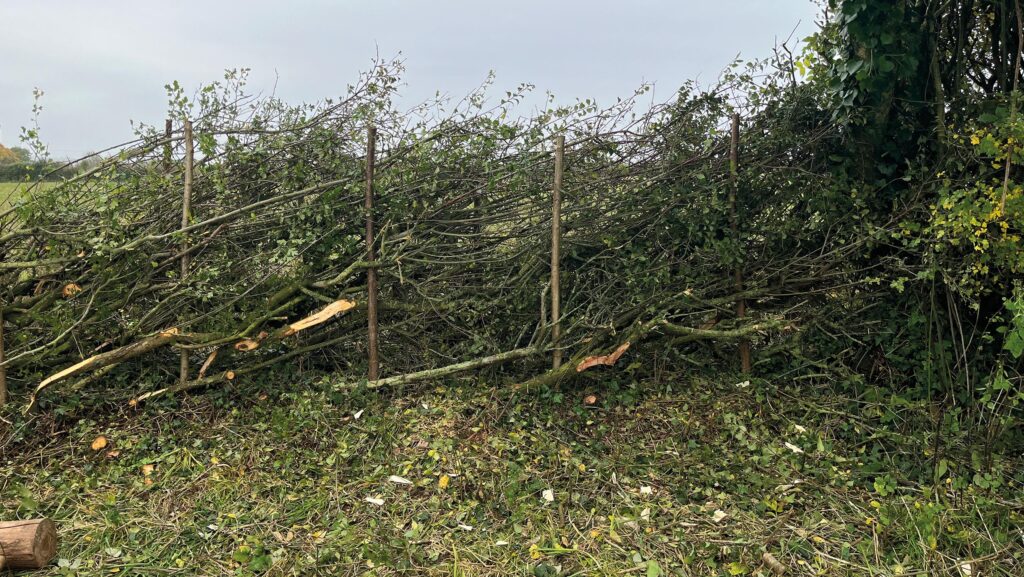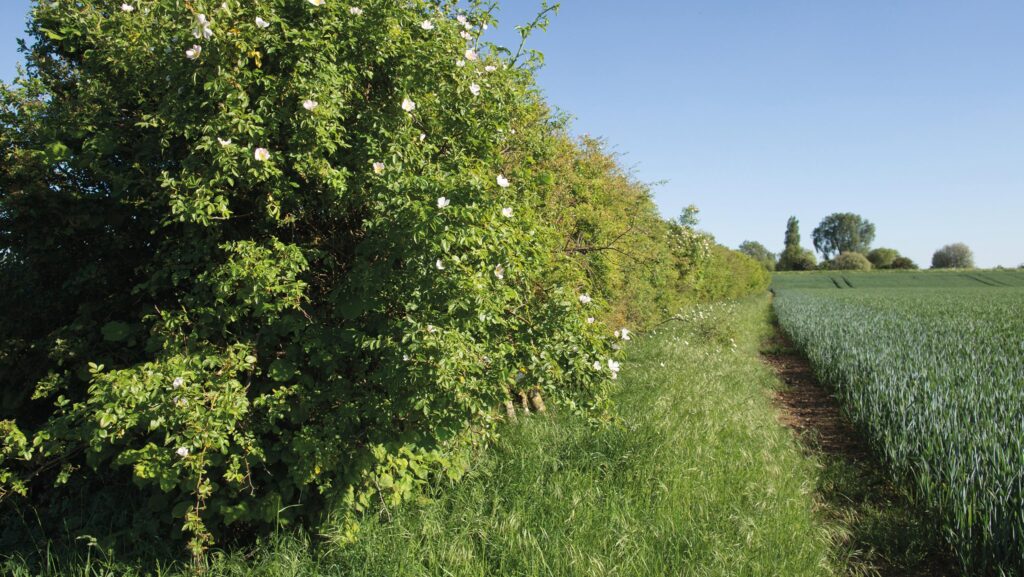Tips on achieving healthy hedgerows on farm
 © Tim Scrivener
© Tim Scrivener Hedges are a defining feature of our countryside and one of the best habitats for wildlife on any farm.
Far more than being a boundary, they also support farm business resilience in numerous ways, providing the connectivity for nature’s recovery.
To get the best economic, environmental and ecological potential from them, hedges need managing, says Megan Gimber, key habitats officer at the People’s Trust for Endangered Species.
She recommends using the hedgerow management cycle to guide decisions.
See also: How a Lincs farm dries grain cheaply without fossil fuels
“All hedges require rejuvenation at some point,” she stresses. “By that, I mean laying or coppicing.
“In the meantime, they need flexible management to ensure they are thick and bushy, to keep them healthy and prolong their life.”
The good news is that no matter what condition a hedge is in, there is a way to bring it back to health with good management, she adds.
Hedge management tips
A pick-and-mix management approach is often the best, says Megan, as hedgerows are a dynamic system and cannot be kept at the same stage indefinitely.
Where they’ve been heavily over-trimmed – often by being cut repeatedly at the same level – a hard knuckle forms at the trim line, followed by gaps and sparse stems with few branches or foliage in the lower parts. This creates a top-heavy hedge.
What makes the perfect hedge?
A diversity of hedges across the landscape is required, but the following are all common features of a well-functioning hedge:
- Mixed species/species diversity – provides more food and resilience
- Size – the bigger, the better for wildlife; but need dynamic hedges, too
- Connectivity – link with other habitats for wildlife highways
- Margins – add to the hedge benefits and protects wildlife
- Density to the base – hedges that touch the ground give shelter
- Hedgerow trees – trees act as a buffer and provide extra resources for wildlife
If the hedge structure has deteriorated badly, these should be coppiced, with a few trees retained and gaps planted up.
This should be followed by frequent trimming in the first five years to encourage bushy growth.
Otherwise, hedge laying may be appropriate, as it allows new growth to come from the base.

© Louise Impey
Subsequently, these can be incrementally trimmed, to help them also become robust and dense.
In contrast, a very tall and overgrown hedge may need to be managed as a line of trees – with selective thinning undertaken.
They also need coppicing or laying, before gaps are planted up. In this way, they return to the management cycle – starting off with frequent trimming before a non-intervention period.
“Whatever you have on the farm, don’t treat them all the same and don’t grow them to the desired height and repeatedly cut them there,” says Megan.
Incremental trimming
Trimming a hedge slightly higher and wider each time will benefit its structure and extend the time between the need for coppicing or laying, she advises.
Just changing the cut by 10cm helps to avoid any structural damage and ensures they always have a young band of flowering wood at the edge, providing blossom and fruit for wildlife.
Wildlife in hedges
Devon farmer, author and ecologist Robert Wolton counted the number of species in a single hedge on his farm to understand more about the value that they bring to the landscape.
From his painstaking work, some 2,070 species were identified – with the largest group being insects (1,718 species) and most of the insect species being flies (832 species).
Malaise traps and emergence traps were used in the project, to monitor both flying and ground-dwelling species.
“The reality is that there are probably more like 3,000 different species using the hedge for their life cycle,” he says.
Margins are important too, as is any bank and ditch.
“These can be overlooked but they are really important for biodiversity.
“There are 107 priority species for conservation associated with hedges.”

© Tim Scrivener
Given their higher profile, Robert has five hedgerow challenges for farms:
- Rejuvenation needs to happen – hedges must be managed to be thick and bushy.
- More hedge planting needed to restore networks and connectivity.
- Wider hedges are required – let them expand out and have margins.
- Stop nutrient input as far as possible – or cleavers and nettles will dominate.
- Scruffy hedges are good for wildlife and for farms.
Otherwise described as trimming it green, incremental trimming or flailing helps to avoid compromised hedge structures.
“Light trimming stimulates bushy regrowth from the new, higher trim line, so the plant gets bigger each year.
“It’s been a game changer. When it gets mature, the hedge is then ‘let up’ for a number of years before it has to be laid.”
Funding for hedges
There are now a number of funding options for hedge management through the Sustainable Farming Incentive (SFI):
HRW1: Assess and record hedgerow condition – £5/100m for one side per year
“This action is a great step forwards,” highlights Megan Gimber of the People’s Trust for Endangered Species.
“You need to understand what condition your hedge is in and where it is in its life cycle before you know what management is required.”
The Healthy Hedgerows app can be used for this purpose – enter a few details and it will tell you how to get a hedge in better shape.
“Do this action in the winter, when the leaves are off, and you will get instant advice.”
HRW2: Manage hedgerows – £13/100m for one side each year
The aim is for a range of different heights and widths of hedges on any farm, so government support for the hedgerow management cycle is welcome, she continues.
“It pays for incremental or rotational trimming, as well as coppicing and laying. So it offers some flexibility with established hedges.
Under HRW2, young hedges – those in their first five years – have to be incrementally trimmed from the start.
“Although you do get a good hedge, there are other ways of achieving the same result, but they’re not in the SFI.”
HRW3: Maintain and establish hedgerow trees – £10/100m
This action requires farmers to have an average of at least one hedgerow tree per 100m.
“Again, there’s flexibility,” reveals Megan. “You can select an existing sapling in the hedge and leave it standing, or you can plant a new sapling into an existing hedge.”
While it’s not easy to plant and grow new trees in existing hedgerows, there are different approaches depending on whether the hedge is in need of rejuvenation or not, she points out.
Capital grants: Various including BN5, BN6 and BN7
Under the SFI, farmers can also apply for capital grants to help them manage eligible hedgerows.
This covers costs associated with laying (£13.52/m), coppicing (£5.33/m) and gapping up (£17.22/m). Check the details, as conditions apply.
What about carbon?
Research at Leeds University has looked at carbon sequestration rates of hedges, both in the above-ground biomass and in the soil.
Prof Pippa Chapman revealed that soil under hedgerows stores 31% more carbon than intensive grassland at 0-50cm depth.
“For a 40-year-old hedge, that’s a rate of 1.48t of carbon per hectare,” she says.
In the above-ground biomass, carbon stock increases as the hedge ages, but the average sequestration rate is 2t of carbon per hectare.
“After 40 years, it doesn’t go up much. So management becomes really important.”
All of the contributors were talking to Farmers Weekly at Hedgefest, a specialist one-day event held at Chris Rumming’s Park Farm, near Swindon, with the aim of sharing practical advice on good hedge planting and maintenance

